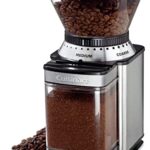Grinding knives into form is a rewarding process, as well as a lucrative business if you know what you’re doing. And the best 2×72 belt grinder for knife making is your bet. You’ll need a grinder whether you’d like to build pocket knives, fixed blade knives, railroad spike knives, or something else entirely.
Purchasing a knife grinder is a significant investment, so make sure you know what you’re looking for. Different models have advantages and disadvantages, and different grinder categories serve different functions. This article discusses what to look for in a grinder and then compares and contrasts a variety of knives
Don’t have time? Quick Overview of Best 2×72 Belt Grinders For Knife Making






Benefits of a 2×72 belt grinder (compared to other belt grinders)
Anyone in the knifemaking industry can assure you that the 272 belt grinder is greater than the 130, and they are correct; the 272 belt grinder will increase your speed, power, and save you money. Yes, you will save money because your belts will last longer. How is this – longer length = less heat on the belt, resulting in a much wider selection of belts than with the 130 belts. This is not to express the 130 belt grinders are horrible; they’re a great starting point for novices, and once you’ve acquired some knowledge, you can progress to the next level.
How to build a 2×72 belt grinder
Even if built from a belt grinder kit, a high-quality new 2×72 belt grinder costs over $2,000 new. Some home builders create their own sanders for little to nothing, while others spend hundreds of dollars on new wheels, a new motor, and other accessories. A nice homebuilt 2×72 belt sander, on the other hand, can be purchased for around a tenth of the retail price – around $250. That cost can easily be lowered in half, to around $125, if you can find some inexpensive spare parts and components (most notably the motor).
Components for belt sanders
A belt sander can be broken down into the five parts described below. Consider each component independently if you want to build a belt sander but aren’t sure where to begin.
The framework – This is normally made of steel, and can also be made of wood. The metal frame is welded together, and can also be bolted together. Getting a free weight bench from Craigslist and cutting it up to use as a frame is a brilliant trick.
Wheels – Beaumont Metal Works sells pre-made belt sander wheels, but they’re pricey. You can make your own wheels if you know how to machine. Wheels are available for purchase (skateboard wheels are a favorite). You can also make your own wheels out of wood or MDF in many layers. It is possible to remove idler wheels from engines. For proper tracking, the wheels will need to be crowned. Crowning can be done with a machine or simply masking tape. The backing of the 2×72 belts, however, can wear down the crowning.
The source of energy – Almost always, this will be an electric motor. A brand-new motor is available for purchase. You can Remove your motor from existing appliances or tools to save money.
Getting a free treadmill from Craigslist with a nice motor and controls to allow you to regulate the speed of your belt sander is a popular trick.
Examine the treadmill belt and notice how worn the more frequent buttons or controls are to get a rough indication of the treadmill motor’s condition. A treadmill motor will almost always be in fantastic condition; you won’t be obtaining a treadmill from an Olympic athlete who has used it a lot.
Consider looking for treadmills on Craigslist using misspellings; in this case, the most prevalent misspelling of treadmill is “treadmill.” It’s also sometimes spelt as two words: “treadmill.”
You may also make a belt sander out of an existing instrument; a bench grinder is a popular choice. An electric drill or even a rotary tool like a Dremel can power smaller belt sanders.
Dust and dirt will be kept at bay with a sealed motor. You can also construct your own protected shelter. You won’t know how awful the vibration is until you use the sander for the first time. For the time being, just think about vibration-reducing mounting choices.
You might wish to alter the motor speed, and a step pulley is a good way to do so. After accounting for speed adjustments, whether with a variable frequency drive, a step pulley, or another means, some builders find that they rarely use the varied speeds regardless.
The mechanism for tracking – The belt must be properly monitored in order for it to ride smoothly on the wheels. This is an afterthought for many first-time belt sander builders, but it turns into a major hassle when the belt sander is first tested. Fortunately, tracking is a simple process that is normally accomplished with the use of an eye bolt. When the speed is changed, the tracking usually needs to be modified.
The tensioning system – To operate, the belt on the belt sander must be tensioned and then relaxed to remove the belt. One technique is to attach the motor to a hinged plate, which then serves as the tensioning device. Another wonderful idea is to save the incline motor from a treadmill, which is used to adjust the treadmill’s incline so that a person can walk or run “uphill” on it. This incline motor can also be used to tension fabric.
Top Rated 2×72 Belt Grinder For Knife Making
1. Grizzly G1015 Knife Belt Sander
Without a question, the Knife Belt Sander is your best option. It spins quietly, with no surprising wobbling or vibration, and it’s well-made and sturdy. The assembly instructions are simple to follow, and it has enough power.
It’s a single-speed machine that can chew through metal. The adjustable arm, as well as the work rest, will be a hit with you. Changing belts is a breeze, and it’s as simple as pulling on a spring-tensioned arm. The bottom plates enable for extremely secure fastening to any surface with a screw or bolt, and the buffing wheel arbor is precisely what you’d expect.
The arm is long enough to move heavier objects without colliding with the motor. It’s well worth the money. There is a hack where you apply tape to the drive wheel and it tracks flawlessly once applied. If you’re used to grinding for 45 minutes, it’ll only take 4 to 5 minutes with the Grizzly Knife belt sander. Because the belt arm of the G1015 is intended to tilt horizontally or vertically, the auxiliary arbor accepts sanding drums, buffing wheels, or flap wheels and lies flat.
Notable features
- Dimensions – 30.5 by 16.25 by 15 inches
- Weight – 59.9 pounds
- 2 by72 sanding belts
- Rubber aluminum roller
- Cast iron body
- 5/8 arbor
- Quick-release belt tension
- Ball-bearing construction
Pros
- Easy to assemble
- Value for money
- Great sander
- Heavy duty
- Flawless
- Great quality
- Easy to use
- Easy to adjust
- Versatile
Cons
- Not extremely precise
2. Shop Fox W1843 Knife Belt Sander
This knife belt sander is famous with knife manufacturing companies as it has a cool-running 2″ x 72″ abrasive belt as well as an extended buffing wheel shaft for full-access buffing or stropping.
The sanding belt is used against a 10″ rubber-faced drive wheel, and along platen, or above the platen for free forming. You can adjust the tool holder indefinitely, providing an excellent basis for consistent results.
Adjustable Tool Holder – The tool holder is infinitely adjustable, ensuring a firm foundation for consistent results. Sanding Arm Adjustment – The sanding arm assembly is tilted horizontally. For certain sorts of sanding activities, this configuration is more convenient.
Tool Rest that can be adjusted – For a variety of procedures, the W1843 tool rest can be modified or removed. The W1843 is capable of more than just sharpening and buffing knives. In woodworking applications, the auxiliary Arbor accommodates buffing wheels, sanding drums, or flap wheels.
Sanding belt – A sanding belt is a tool that is used to sand wood or metal surfaces. Aluminum oxide sanding belts for wood and silicon carbide sanding belts for metal are recommended.
It also comes with a 10″ rubber-faced drive wheel, all ball bearings, and 1 HP, single-phase, 110V, 14A, 1725 RPM motor.
Everything is in order. powerful. There are numerous ways to adjust the tool rest. The tracking is a little fiddly to set up, but once it is, it is really stable. Belt changes are simple and quick. If you don’t mind not having variable speed, this is a fantastic machine.
Notable features
- Dimensions – 29.5 by 39 by 39 inches
- Weight – 59 pounds
- Power source – Cord-Electric
- Cord length – 50 inches
- Cast iron body
- All ball bearing construction
- 2*72 abrasive belt
- Extended buffing wheel shaft
- Adjustable tool rest
- Sanding arm adjustment
Pros
- Lightweight
- Versatility
- Easy to use
- Sturdiness
- Value for money
- Easy to assemble
- Durability
- Powerful
Cons
- Plastic power button
3. Intbuying 220V 2Hp Variable Speed 2X72 inch Belt Grinder
Belt Grinder Variable Speed Chassis is made for professional knife makers, as well as other cutting equipment and machines.
The frequency converter must be installed in a space with sufficient heat dissipation capacity.
When reserving the space, please take into account the heat dissipation of other equipment in the cabinet.
The operation and display interface are introduced. The frequency converter’s function parameters can be changed, the frequency converter’s working state can be monitored, the frequency converter can be controlled (start and stop) and other frequency converter operations may be completed using the operating panel.
The circuit breaker must be used to separate the frequency converter from the power source; to prevent fire alarm from occurring.
The set is easy to maintain and doesn’t require any specific engineering abilities. It can also be made in your workshop.
You’ll also need to put the motor and the pulley in place.
It’s a decent grinder. It is adaptable, since it may be used with a 2 by 72 belt grinder for knife making or 2 by 48 belts.
Notable features
- 220V/50hz electrics
- 72″*2″/1828mm*50MM Belt Dimensions
- Weight: 69KG/152 pounds
- Package with Wooden Case
- Sander knife grinder
Pros
- Easy to assemble
- Value for money
- Durability
- Easy to use
- Sturdiness
- Easy to adjust
Cons
- Needs better VFD
How to choose your Best 2×72 Belt Grinder for knife making
There are several factors to consider while choosing a grinder. Are you a stickler for details in your work? Are you looking for the most modern professional machine or something simpler? These factors will influence the appropriate machine for your requirements.
Combo Grinder, Belt Sander, or Disc Sander
When looking for a grinder, you’ll most likely choose between a belt sander and a disc sander. (there are also other less common grinder styles) Each has advantages and disadvantages, so consider what you desire.
Grinder combos. There are also a lot of grinders that come with both a disc sander and a belt sander, which is a terrific combination. This provides a lot of versatility.
Sanders with a disc. A disc grinder has the advantage of providing you with a larger sanding surface in general. Disc sanders are also useful for fine precision work when you need to direct the knife more precisely. While using a disc sander, take into account that the further out you go, the faster that area of the disc spins. This has an impact on how you use the grinder and which area of the disc is optimal for the job.
Sanders with a belt. Belt grinders have the benefit of being able to grind flat surfaces and inside curves. They do reduce your total grinding space, but I don’t think this to be a major drawback. Belt grinders can operate with a variety of belt diameters. Wider belt diameters are excellent for broader grinding, whereas thinner belts are ideal for finer work.
Noise
Some grinders feature incredibly loud motors that, if not adequately shielded, can be both unpleasant and damaging to your ears. Other variants can work at far lower noise levels. Using a loud sander in a residential garage may not be optimal, in regard to your own safety and comfort. You should think about the environment in which you’ll be using your grinder to see if noise level is an issue for you.
Variable or Fixed Speed
When purchasing a knife-making grinder, make a note of the RPM. It’s also worth noting whether the grinder updates at that speed all of the time or if it can be changed. Variable speed is a good feature to have, but it isn’t essential. It all depends on how crucial this is to you and whether you’re prepared to spend a little more for it, as this may incur additional charges.
Other best 2×72 belt grinder for knife making specs to consider
Dimensions of the motor
High belt speed and the capacity to generate high pressure are essential to grind steel with abrasive belts. Your engine must keep up! The more powerful the grinder, the larger the motor. For a 72” long belt, a rule of thumb is 1 horsepower (hp) of motor power for 1” of belt width.
A 2hp motor, for example, is ideal for a 2×72 grinder. A 1×72” grinder would grind perfectly with only 1 horsepower. Because the demand on the motor is reduced when the belt length is reduced, our 2×48” machines are equipped with a 1.5hp motor.
How much should you spend on a belt grinder
It’s critical to consider your budget as well as the type of job you’ll be doing when choosing a grinder.
Dimensions of the Grinder
The width and length of the belt size are used to classify belt grinders. A 1×30 grinder, for example, has a 1-inch wide belt with a circle of 30 inches, and a 2×72 grinder has a 2-inch wide belt with a circumference of 72 inches.
A wider belt creates more friction on a machine’s flat platen, necessitating more power, whereas a longer belt reduces the time between belt changes while simultaneously necessitating more power.
The belt size has a significant impact on how the grinder is used; in general, the larger the belt, the more useful it is for removing heavy stock.
Speed of the Belt
The third vital factor to consider while grinding steel is the pace at which your belt travels. To grind effectively, it must move much faster than a wood sander.
Frequently Asked Questions (FAQ)
Q: Do you need a 2×72 belt grinder for knife making?
Compact, high-performance 2×72 belt grinders are designed to support a wide range of attachments for varied applications. Professional knife grinders for makers favor them, there are other solutions that are more compact, less expensive, and just as effective (if not more so) for some applications.
Q: What is the difference between a belt sander and a belt grinder?
| Belt sander | Belt grinder |
| Scuffs on the material are removed with a belt sander. | The surface of the materials is ground with a belt grinder. |
| The most common material sanded using a belt sander is wood. | For industrial uses, a belt grinder is used to grind metals. |
| A belt sander has a sandpaper-covered spinning sanding belt. | This machine contains an abrasive metal belt that aids in the grinding of metal. |
| It can be used to remove non-ferrous metals from wood or other materials, such as aluminum. | It is used to get the desired metal finish. |
| It’s used to smooth down the surface and the edges. | It aids in the honing of materials. |
| Sanding can only be done on wooden and other non-metal materials with a sander. | With the use of a grinder, large blades or knives can be sharpened. |
Conclusion
Investing in 2×72 belt grinder for knife making is a fantastic improvement for any knifemaker; if you’re on the fence, do it! If you can’t afford it, be reminded it’s a terrific investment for your business and pastime (you’ll definitely bring more delight to your knifemaking experience) If you can’t really afford it! Make it happen! Just try looking around on YouTube to see how many people have produced their own and created a video describing the procedures to take.

Hi, this is Cynthia A. Rose. Welcome to my Grinder related blog. Usually, I am busy with my kitchen and cooking all day. My main desire is to create a new recipe every day. But I have to use new tools every day to create new recipes. In this blog, I will share you how to use kitchen tools properly. I will not just share cooking related equipment, I will try to review all kinds of grinders like angle grinder among you. I hope my 12 years of experience will come in handy. Thanks!





